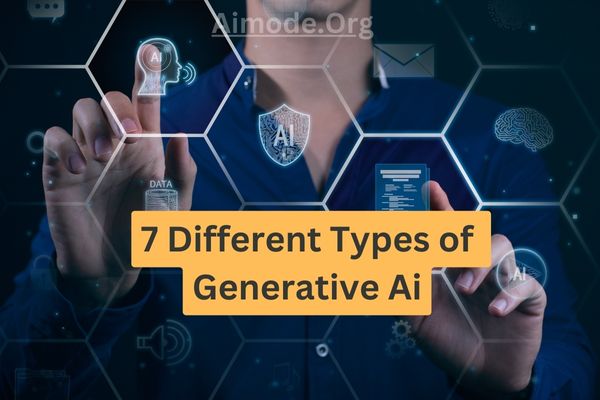Generative Artificial Intelligence stands for technologies that develop the ability to create new content like images, text, or music, that is artistic in nature. Among the different approaches to generative AI and mention few of them like generative adversarial networks (GANs), autoregressive models, and variational autoencoders (VAEs).
Also See: Different Types of Ai Ethics
These concepts are appreciated in various industries, such as the arts and entertainment as well as the drug research and content generation fields. Comprehending the variety of AI methods owned by the researchers and developers allows for a proper delivery of creativity powerfully and ethically. This article explores these diverse types of generative AI, their applications, and the implications of their rapid advancement in today’s technological landscape.
7 Different Types of Generative Ai
1. Generative Adversarial Networks (GANs)
- Description: GANs consist of two neural networks, a generator and a discriminator, that are trained together. The generator creates new data instances, while the discriminator evaluates them.
- Applications: Image generation, video synthesis, creating realistic photographs, art creation.
2. Variational Autoencoders (VAEs)
- Description: VAEs are a type of autoencoder that learn to encode data into a latent space and then decode it back, ensuring the latent space follows a predefined distribution.
- Applications: Image reconstruction, data augmentation, generating new samples that are similar to the input data.
Also See: 12 Types of AI Bias Explained in Detail
3. Transformers
- Description: Transformer models use self-attention mechanisms to handle sequential data and have been very successful in natural language processing tasks.
- Applications: Text generation (e.g., GPT models), machine translation, summarization, code generation.
4. Recurrent Neural Networks (RNNs) and Long Short-Term Memory Networks (LSTMs)
- Description: RNNs and their variants like LSTMs and GRUs are designed for sequential data. They maintain a state that is passed through time steps, making them suitable for tasks where context is important.
- Applications: Text generation, music composition, time series prediction.
Also See: Different Types of AI Models In Detail
5. Diffusion Models
- Description: Diffusion models generate data by simulating the process of noise gradually being added to a data point and then learning to reverse this process.
- Applications: Image and video generation, especially in creating high-quality images.
6. Autoregressive Models
- Description: These models generate data one step at a time, conditioning on the previously generated data.
- Applications: Text generation, audio synthesis, image generation (pixel-by-pixel).
Also See: Future of AI in Education: Changing the Whole World
7. Flow-Based Models
- Description: These models learn to transform data into a simpler distribution (e.g., Gaussian) and then reverse the process to generate new data.
- Applications: Image and text generation, anomaly detection.
Examples of Generative AI Applications
- Text Generation: GPT-3, GPT-4 (OpenAI), BERT (Google).
- Image Generation: DALL-E (OpenAI), BigGAN, StyleGAN.
- Music and Audio: Jukedeck, OpenAI’s MuseNet, DeepMind’s WaveNet.
- Video Generation: Deepfake technologies, video synthesis models.
Key Considerations
- Quality and Realism: How believable or high-quality the generated content is.
- Control and Customization: The ability to guide the generation process according to specific needs or constraints.
- Ethical and Legal Implications: Issues related to the misuse of generated content, such as deepfakes or unauthorized creation of copyrighted material.
Also See: 16 Potential Benefits Artificial Intelligence in Education
Generative AI is a rapidly evolving field, with continuous advancements pushing the boundaries of what AI can create.
